Your Which of the following continents was not covered by ice during the pleistocene ice age images are ready. Which of the following continents was not covered by ice during the pleistocene ice age are a topic that is being searched for and liked by netizens today. You can Get the Which of the following continents was not covered by ice during the pleistocene ice age files here. Find and Download all free images.
If you’re searching for which of the following continents was not covered by ice during the pleistocene ice age images information connected with to the which of the following continents was not covered by ice during the pleistocene ice age topic, you have visit the right site. Our website frequently gives you hints for refferencing the maximum quality video and picture content, please kindly hunt and locate more informative video content and graphics that match your interests.
Which Of The Following Continents Was Not Covered By Ice During The Pleistocene Ice Age. Much of the worlds temperate zones were alternately covered by glaciers during cool periods and uncovered during. Around the end of the Pleistocene all these creatures went extinct the horses living in North America today are all descendants of animals brought from Europe in historic times. Six or seven ice sheets existed in the Northern Hemisphere 21000 years ago when the last glacial maximum occurred. This ice-free corridor also provided one route for humans to move into North AmericaLearn more.
 How Different Were The Coastal Land Masses Of Various Continents During Past Ice Ages Quora From quora.com
How Different Were The Coastal Land Masses Of Various Continents During Past Ice Ages Quora From quora.com
Shifts in rainfall belts. Much of the worlds temperate zones were alternately covered by glaciers during cool periods and uncovered during. Six or seven ice sheets existed in the Northern Hemisphere 21000 years ago when the last glacial maximum occurred. Rocky material is eroded by the glacier and is called moraine. Which of the following continents was not covered by ice during the Pleistocene ice age. I think the correct answer from the choices listed above is option C.
The following discussion focuses on the Pleistocene the most recent epoch of glacial and interglacial cycles of the Northern Hemisphere.
Rocky material is eroded by the glacier and is called moraine. Much of the worlds temperate zones were alternately covered by glaciers during cool periods and uncovered during. America during which about 5920000 square miles of the continent were covered by the ice-sheet. Thus Australia was not covered by ice during the Pleistocene. The following discussion focuses on the Pleistocene the most recent epoch of glacial and interglacial cycles of the Northern Hemisphere. The Pleistocene also extended over some 1350000 square miles of Europe 5200000 square miles of Antarctica and smaller areas in Asia New Zealand and Patagonia giving a total glaciation for the earth.
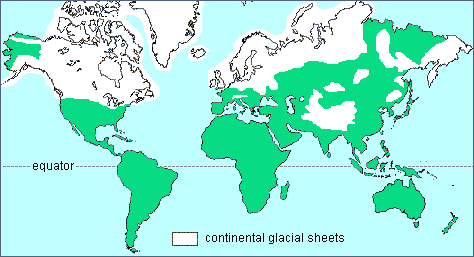 Source: www2.palomar.edu
Source: www2.palomar.edu
Which of the following continents was not covered by ice during the Pleistocene ice age. Pleistocene Glacial Cycles About 18000 years ago when the most recent glacial age was near its peak vast expanses of the northern continents were covered by. Six or seven ice sheets existed in the Northern Hemisphere 21000 years ago when the last glacial maximum occurred. It depends on which glaciers you are considering. In areas not covered by ice -climate differences during the ice ages.
 Source: pinterest.com
Source: pinterest.com
Hope this answers the question. Currently Earth is in an interglacial period which marked the beginning of the Holocene epoch. Also Know are glaciers left over from the ice age. Shifts in rainfall belts. Which of the following continents was not covered by ice during the Pleistocene ice age.
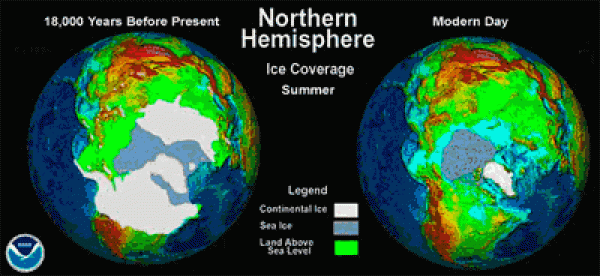 Source: e-education.psu.edu
Source: e-education.psu.edu
Climate scientists estimate that the Pleistocene ice sheets covered about 25 to 30 percent of todays land surface. Around the end of the Pleistocene all these creatures went extinct the horses living in North America today are all descendants of animals brought from Europe in historic times. The current interglacial began between 15000 and 10000 years ago. Reduced evaporation and increasedcloudiness. From Glacier Park in Montana to the Antarctic Ice Cap areas covered by active glaciers as recently as 100 years ago are now ice free and there is speculation thus far unconfirmed of impending collapse of large parts of the Antarctic ice shelf.
 Source: pinterest.com
Source: pinterest.com
In areas not covered by ice -climate differences during the ice ages. From Glacier Park in Montana to the Antarctic Ice Cap areas covered by active glaciers as recently as 100 years ago are now ice free and there is speculation thus far unconfirmed of impending collapse of large parts of the Antarctic ice shelf. USGS Water Science School - Glaciers. Thus Australia was not covered by ice during the Pleistocene. Great teratorn birds with 25-foot wingspans stalked prey.
 Source: iceage.museum.state.il.us
Source: iceage.museum.state.il.us
At their peak ice-covered the northern parts of North America Europe and Asia and the climate fluctuations also caused major changes in vegetation and animal habitats as well as significant changes in ocean circulation. At their peak ice-covered the northern parts of North America Europe and Asia and the climate fluctuations also caused major changes in vegetation and animal habitats as well as significant changes in ocean circulation. Rocky material is eroded by the glacier and is called moraine. Additionally how much of the Earth was covered by glaciers during the last ice age. Reduced evaporation and increasedcloudiness.
 Source: pinterest.com
Source: pinterest.com
At one point during the Ice Age sheets of ice covered all of Antarctica large parts of Europe North America and South America and small areas in Asia. Which of the following continents was not covered by ice during the Pleistocene ice age. The following discussion focuses on the Pleistocene the most recent epoch of glacial and interglacial cycles of the Northern Hemisphere. It was during the Pleistocene that the most recent episodes of global cooling or ice ages took place. The current interglacial began between 15000 and 10000 years ago.
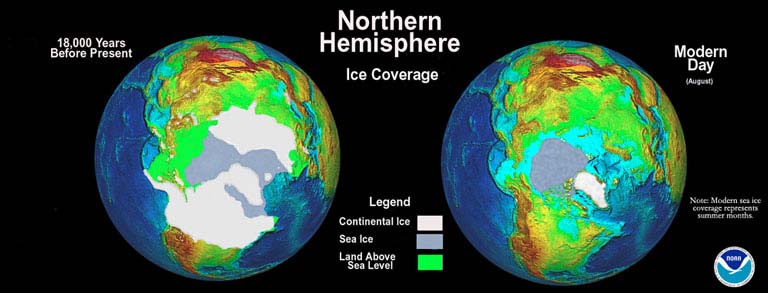 Source: atmo.arizona.edu
Source: atmo.arizona.edu
Canada was nearly completely covered by ice as well as the northern part of the United States both blanketed by the huge Laurentide Ice Sheet. Climate scientists estimate that the Pleistocene ice sheets covered about 25 to 30 percent of todays land surface. This ice-free corridor also provided one route for humans to move into North AmericaLearn more. The Pleistocene also extended over some 1350000 square miles of Europe 5200000 square miles of Antarctica and smaller areas in Asia New Zealand and Patagonia giving a total glaciation for the earth. Asia was not covered by a continental-scale ice sheet.
 Source: quora.com
Source: quora.com
Rocky material is eroded by the glacier and is called moraine. Shifts in rainfall belts. Inland areas had much wetter climate. I think the correct answer from the choices listed above is option C. This caused the ice sheets from the last glacial period to begin to disappear.
 Source: pinterest.com
Source: pinterest.com
At their peak ice-covered the northern parts of North America Europe and Asia and the climate fluctuations also caused major changes in vegetation and animal habitats as well as significant changes in ocean circulation. Additionally how much of the Earth was covered by glaciers during the last ice age. Inland areas had much wetter climate. The modern-day ice sheetsthe eastern and western Antarctic ice sheets and the Greenland ice sheetcover only 10 percent of the land. Currently Earth is in an interglacial period which marked the beginning of the Holocene epoch.
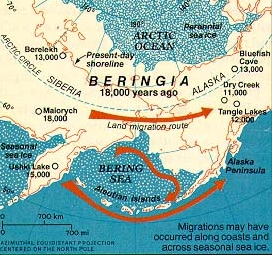 Source: atmo.arizona.edu
Source: atmo.arizona.edu
The following discussion focuses on the Pleistocene the most recent epoch of glacial and interglacial cycles of the Northern Hemisphere. Inland areas had much wetter climate. I think the correct answer from the choices listed above is option C. USGS Water Science School - Glaciers. Thus Australia was not covered by ice during the Pleistocene.
 Source: quora.com
Source: quora.com
There is uncertainty over how much of Greenland was covered by ice during each interglacial. Additionally how much of the Earth was covered by glaciers during the last ice age. Rocky material is eroded by the glacier and is called moraine. This caused the ice sheets from the last glacial period to begin to disappear. The continent that was not covered by ice during the Pleistocene ice age.
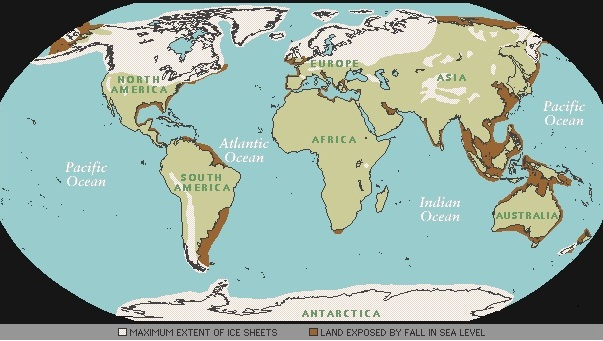 Source: gogreencanada.ucoz.com
Source: gogreencanada.ucoz.com
Inland areas had much wetter climate. Rocky material is eroded by the glacier and is called moraine. This is because the southern location of this nation made it much harder for ice to form even during this time. This ice-free corridor also provided one route for humans to move into North AmericaLearn more. Reduced evaporation and increasedcloudiness.
 Source: br.pinterest.com
Source: br.pinterest.com
Six or seven ice sheets existed in the Northern Hemisphere 21000 years ago when the last glacial maximum occurred. There is uncertainty over how much of Greenland was covered by ice during each interglacial. The Franz Josef Glacier South Island New Zealand. Canada was nearly completely covered by ice as well as the northern part of the United States both blanketed by the huge Laurentide Ice Sheet. At their peak ice-covered the northern parts of North America Europe and Asia and the climate fluctuations also caused major changes in vegetation and animal habitats as well as significant changes in ocean circulation.
 Source: pinterest.com
Source: pinterest.com
There is uncertainty over how much of Greenland was covered by ice during each interglacial. The following discussion focuses on the Pleistocene the most recent epoch of glacial and interglacial cycles of the Northern Hemisphere. From Glacier Park in Montana to the Antarctic Ice Cap areas covered by active glaciers as recently as 100 years ago are now ice free and there is speculation thus far unconfirmed of impending collapse of large parts of the Antarctic ice shelf. This ice-free corridor also provided one route for humans to move into North AmericaLearn more. Around the end of the Pleistocene all these creatures went extinct the horses living in North America today are all descendants of animals brought from Europe in historic times.
 Source: pinterest.com
Source: pinterest.com
This is because the southern location of this nation made it much harder for ice to form even during this time. There is uncertainty over how much of Greenland was covered by ice during each interglacial. Rocky material is eroded by the glacier and is called moraine. Which of the following continents was not covered by ice during the Pleistocene ice age. It was during the Pleistocene that the most recent episodes of global cooling or ice ages took place.
 Source: utahgeology.com
Source: utahgeology.com
Rocky material is eroded by the glacier and is called moraine. Asia was not covered by a continental-scale ice sheet. This ice-free corridor also provided one route for humans to move into North AmericaLearn more. This caused the ice sheets from the last glacial period to begin to disappear. Thus Australia was not covered by ice during the Pleistocene.
 Source: pinterest.com
Source: pinterest.com
It was during the Pleistocene that the most recent episodes of global cooling or ice ages took place. Six or seven ice sheets existed in the Northern Hemisphere 21000 years ago when the last glacial maximum occurred. It depends on which glaciers you are considering. Which of the following continents was not covered by ice during the Pleistocene ice age. Currently Earth is in an interglacial period which marked the beginning of the Holocene epoch.
 Source: pinterest.com
Source: pinterest.com
Which of the following continents was not covered by ice during the Pleistocene ice age. At one point during the Ice Age sheets of ice covered all of Antarctica large parts of Europe North America and South America and small areas in Asia. Additionally how much of the Earth was covered by glaciers during the last ice age. Canada was nearly completely covered by ice as well as the northern part of the United States both blanketed by the huge Laurentide Ice Sheet. Rocky material is eroded by the glacier and is called moraine.
This site is an open community for users to do sharing their favorite wallpapers on the internet, all images or pictures in this website are for personal wallpaper use only, it is stricly prohibited to use this wallpaper for commercial purposes, if you are the author and find this image is shared without your permission, please kindly raise a DMCA report to Us.
If you find this site good, please support us by sharing this posts to your favorite social media accounts like Facebook, Instagram and so on or you can also bookmark this blog page with the title which of the following continents was not covered by ice during the pleistocene ice age by using Ctrl + D for devices a laptop with a Windows operating system or Command + D for laptops with an Apple operating system. If you use a smartphone, you can also use the drawer menu of the browser you are using. Whether it’s a Windows, Mac, iOS or Android operating system, you will still be able to bookmark this website.





